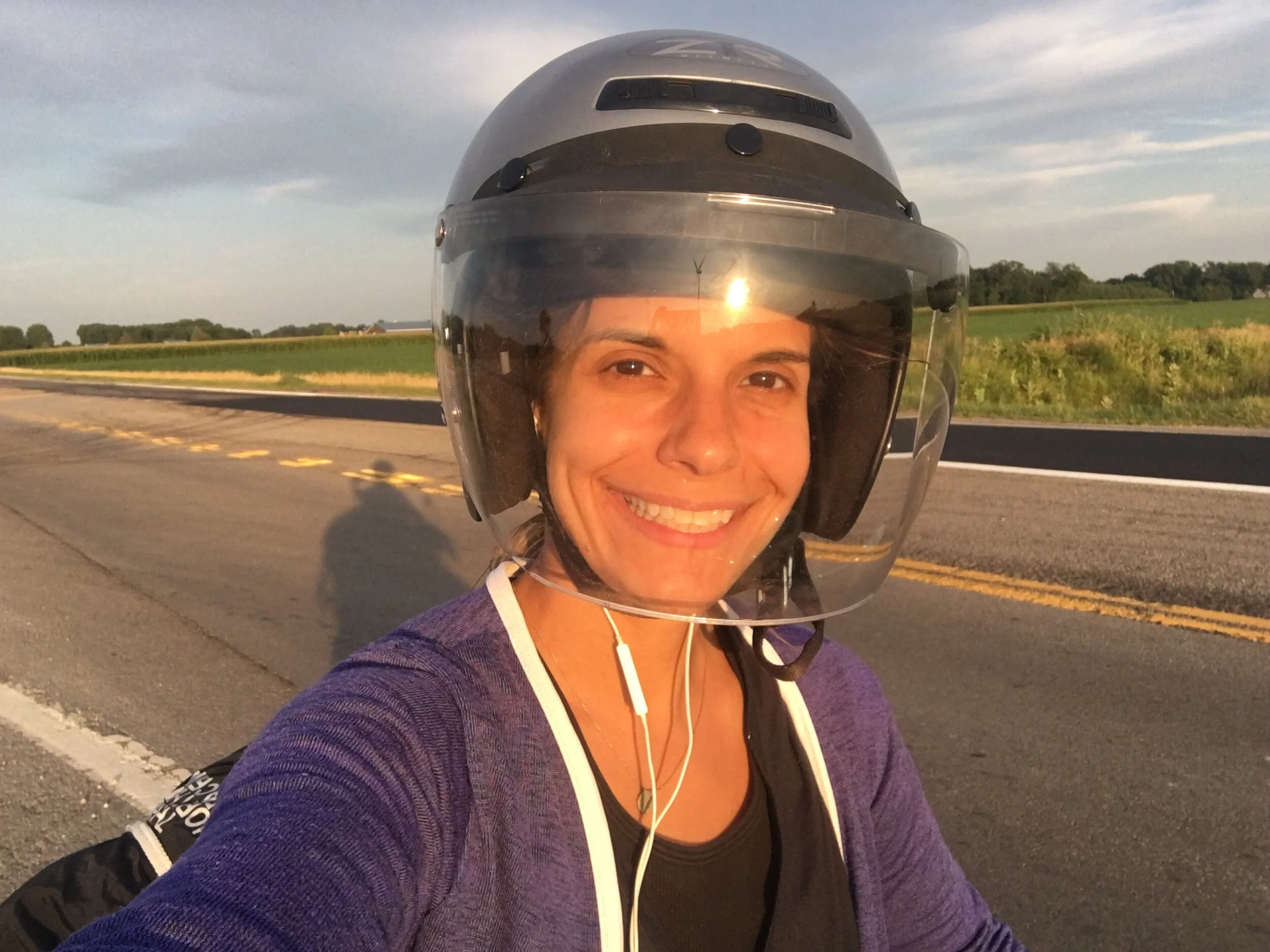The Big Market
The Talat Xai, also known as “The Big Market Past the Bus Station,” is the type of place you want to bring your own bags and small change. Inside the multi-story building are rows of self-storage-esqu shops the close with garage doors selling everything from shoes, toys and knockoff handbags to electronics, spices, cleaning supplies and sporting equipment. Outdoors is the wet market selling live fish, fruits and vegetables and cooked foods. Around the perimeter is a covered butcher area, natural pharmacy, gold hawkers and money changers.
There’s a method to the madness but no map to guide the uninitiated. I spent my first trip just wandering through the poorly lit narrow aisles marveling at stacks of toilet paper, phone cases and travel-sized shampoo. Proprietors sit on their phones on small stools, on their merchandise, or napping in chaise lounges. They wait to be roused, until they’re sure you actually want to buy something, and even then I often feel like I’m inconveniencing them in making a purchase. This is no Istanbul Grand Bazar. No one is hustling. No one can be bothered and almost no one has change.
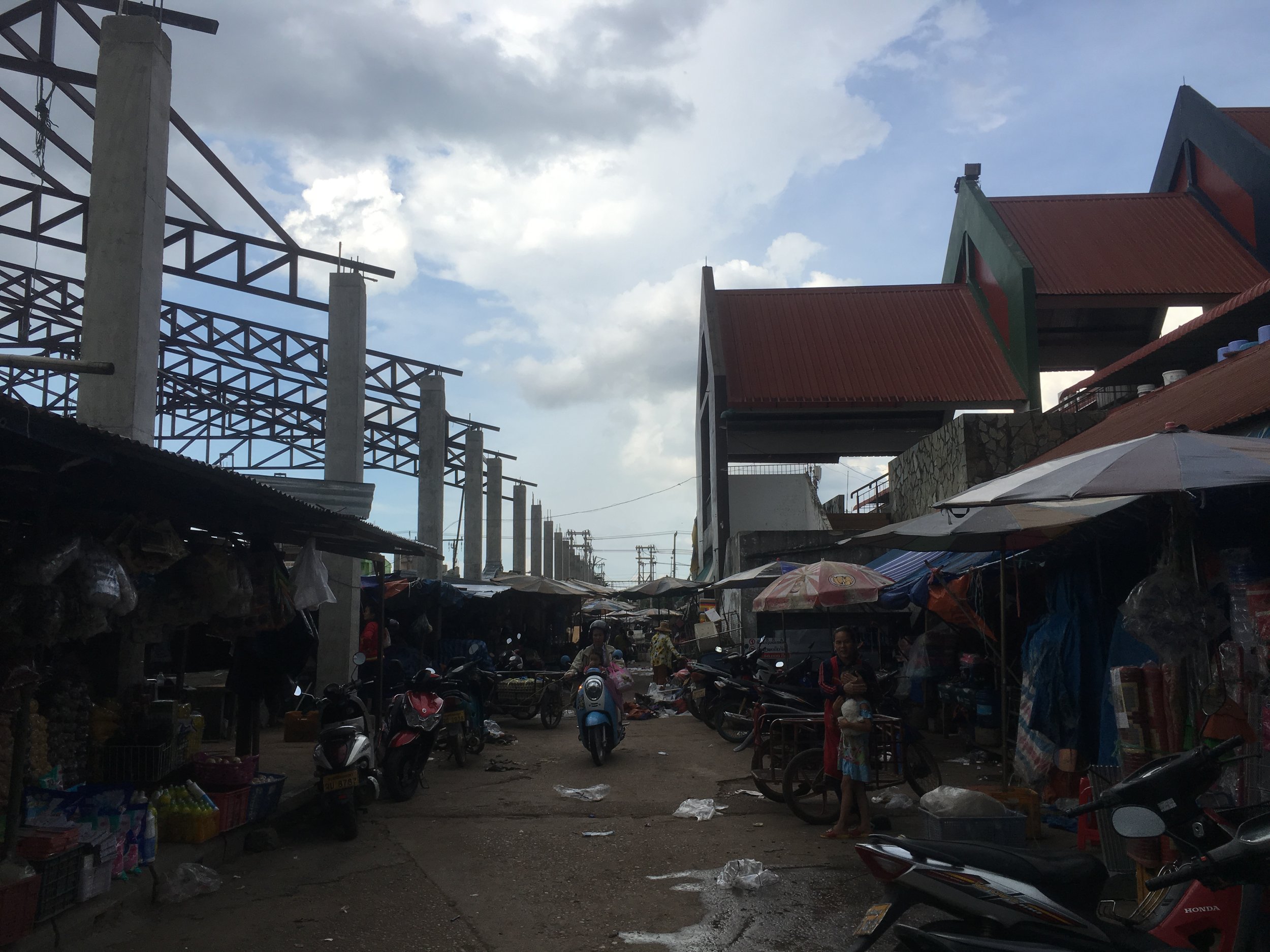
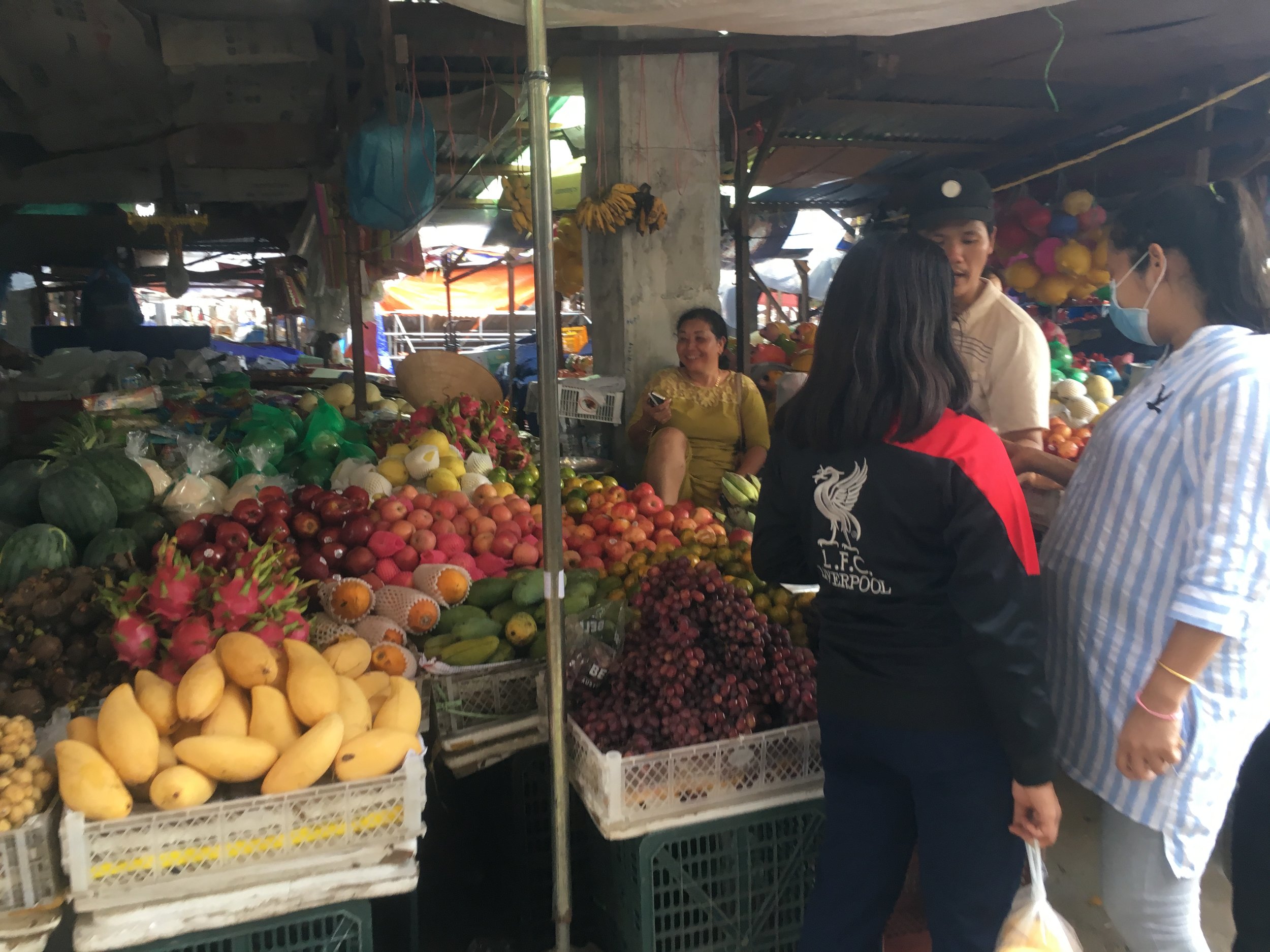
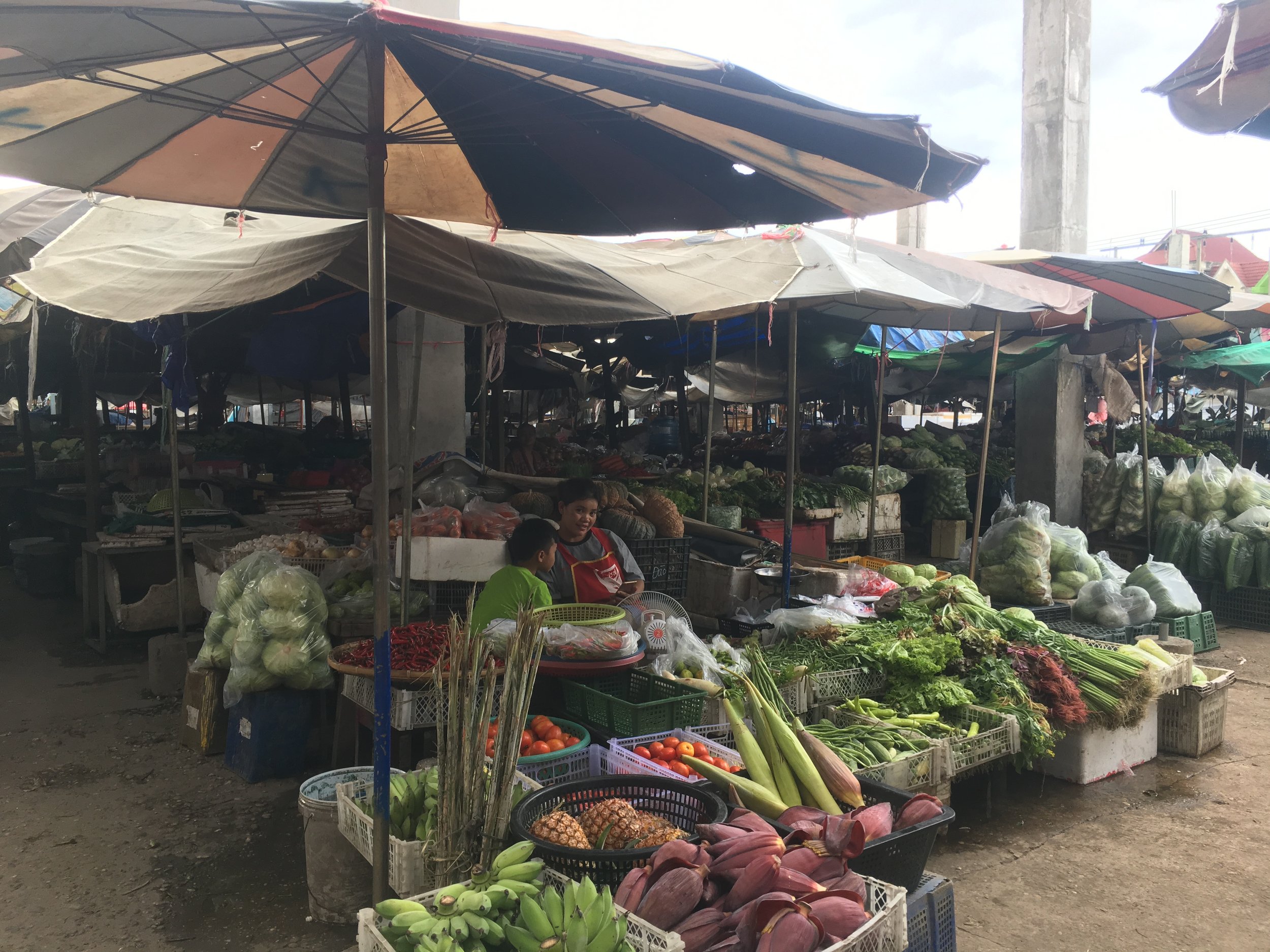


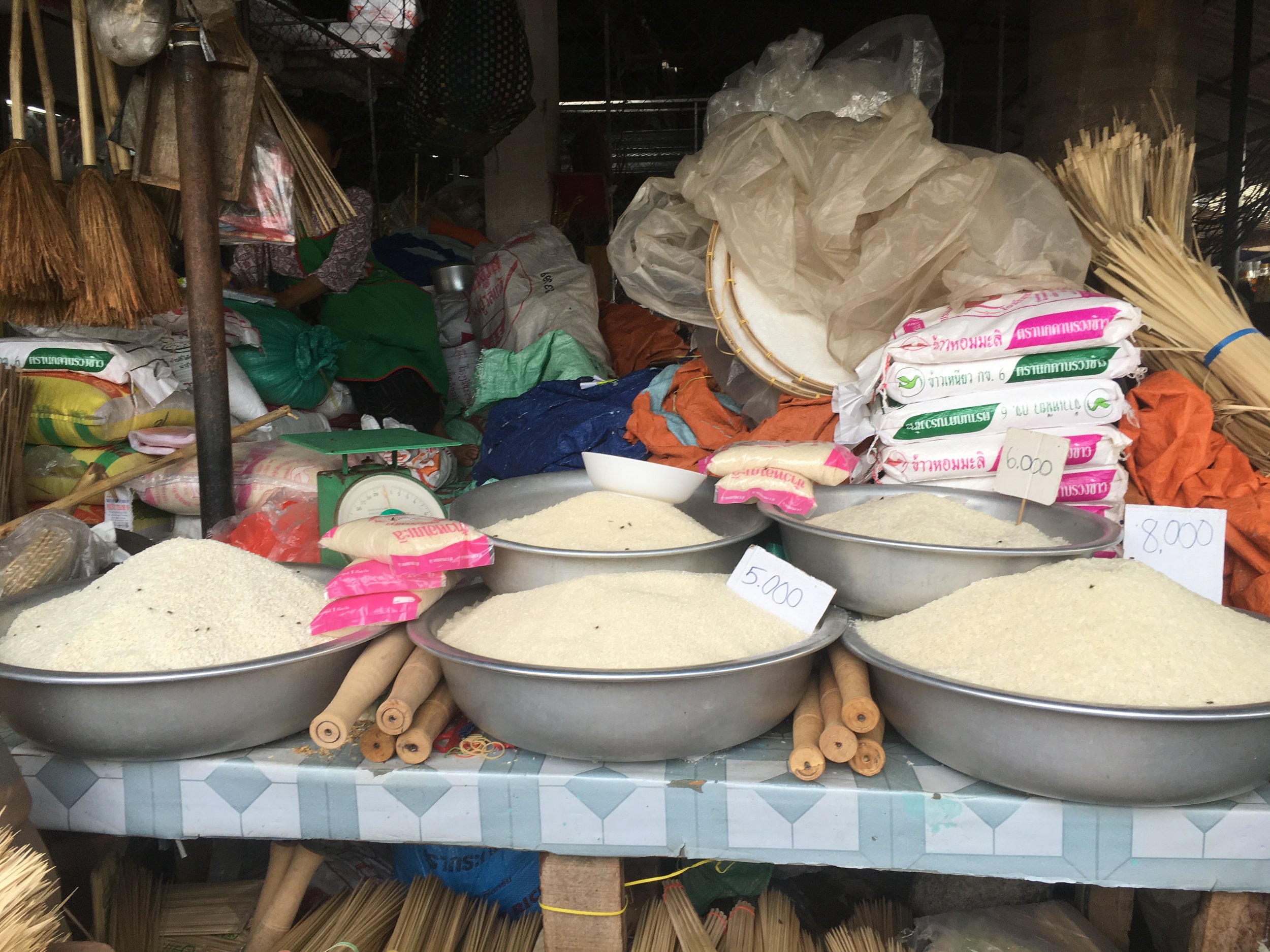
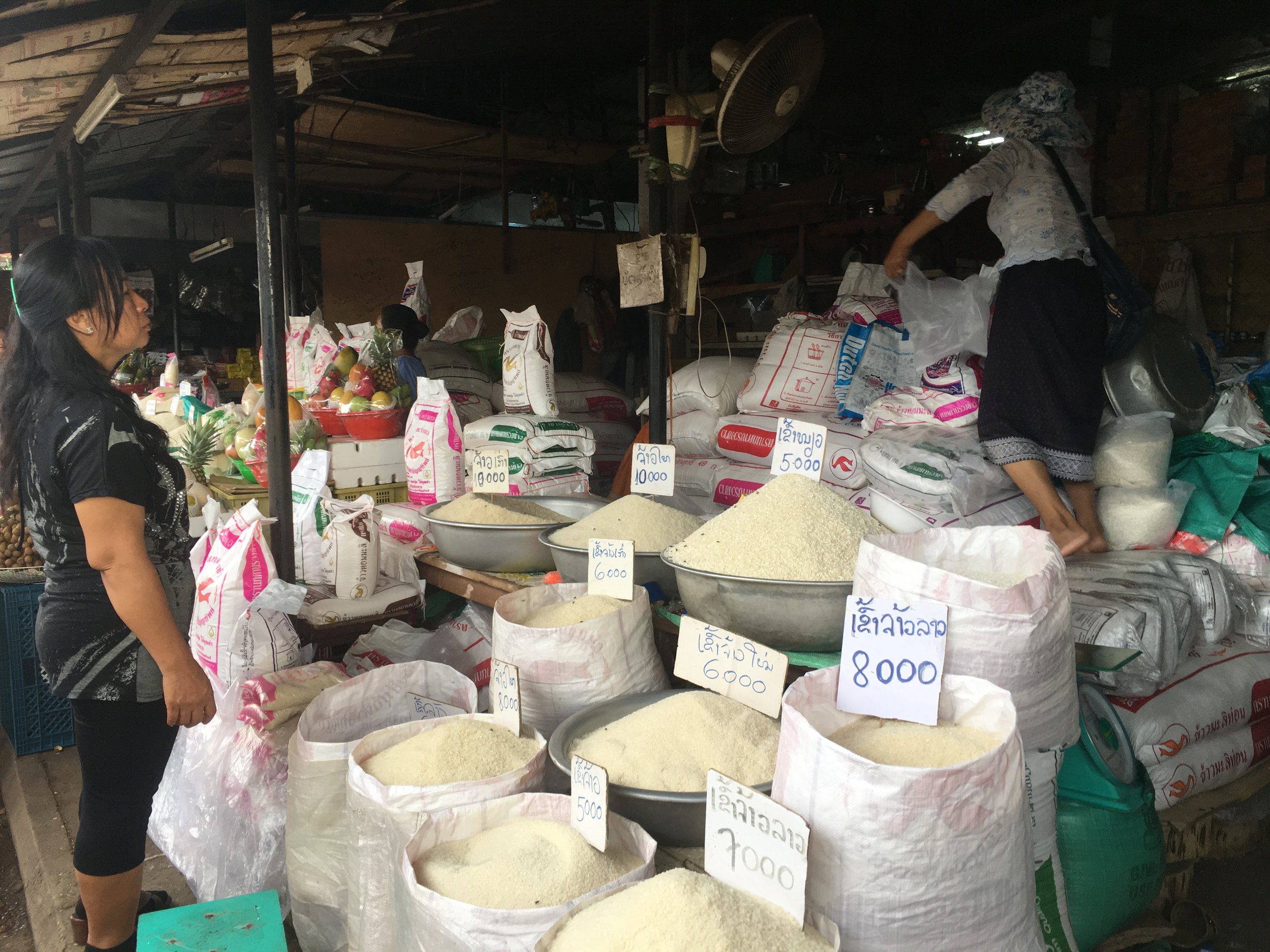
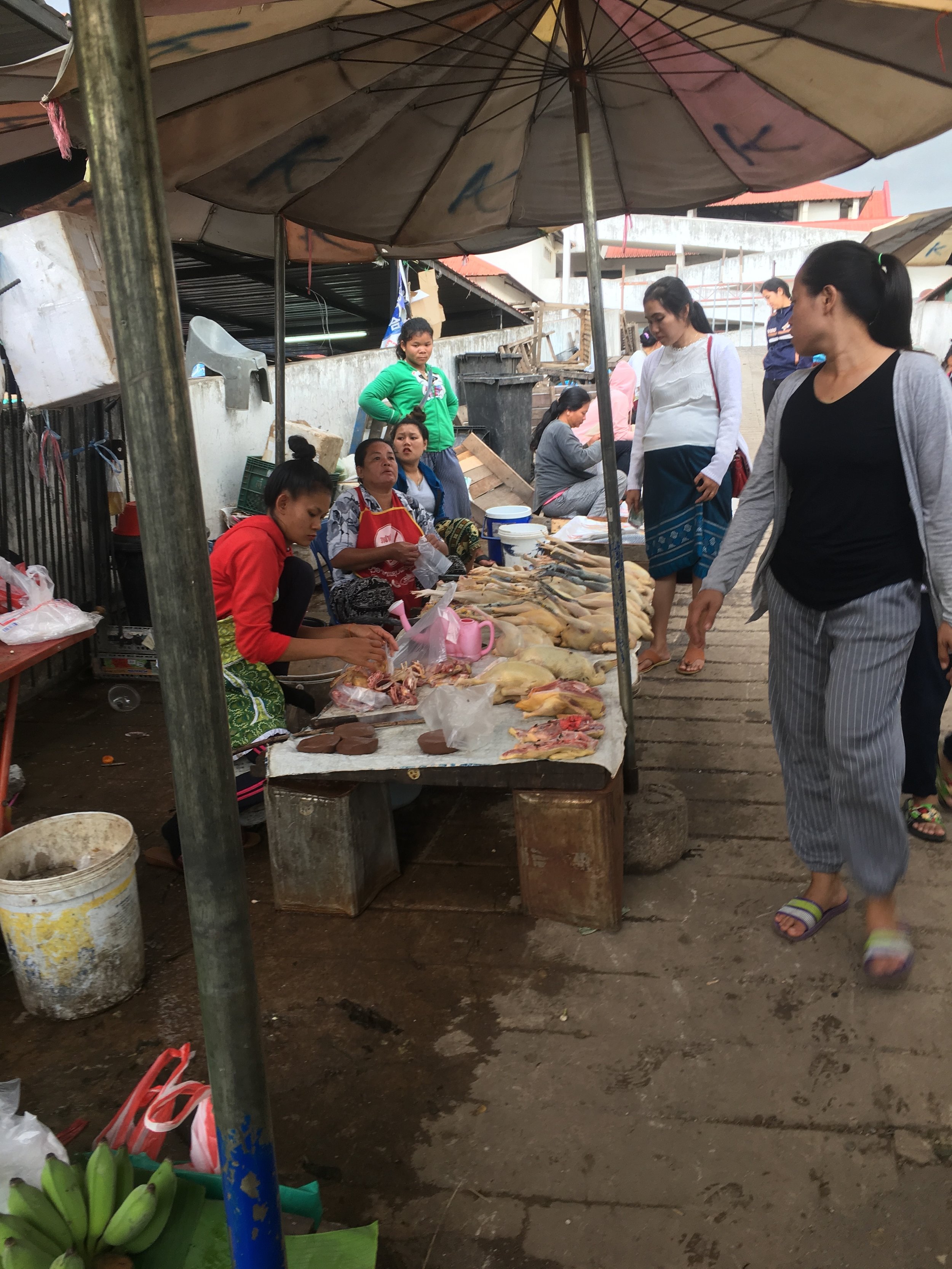
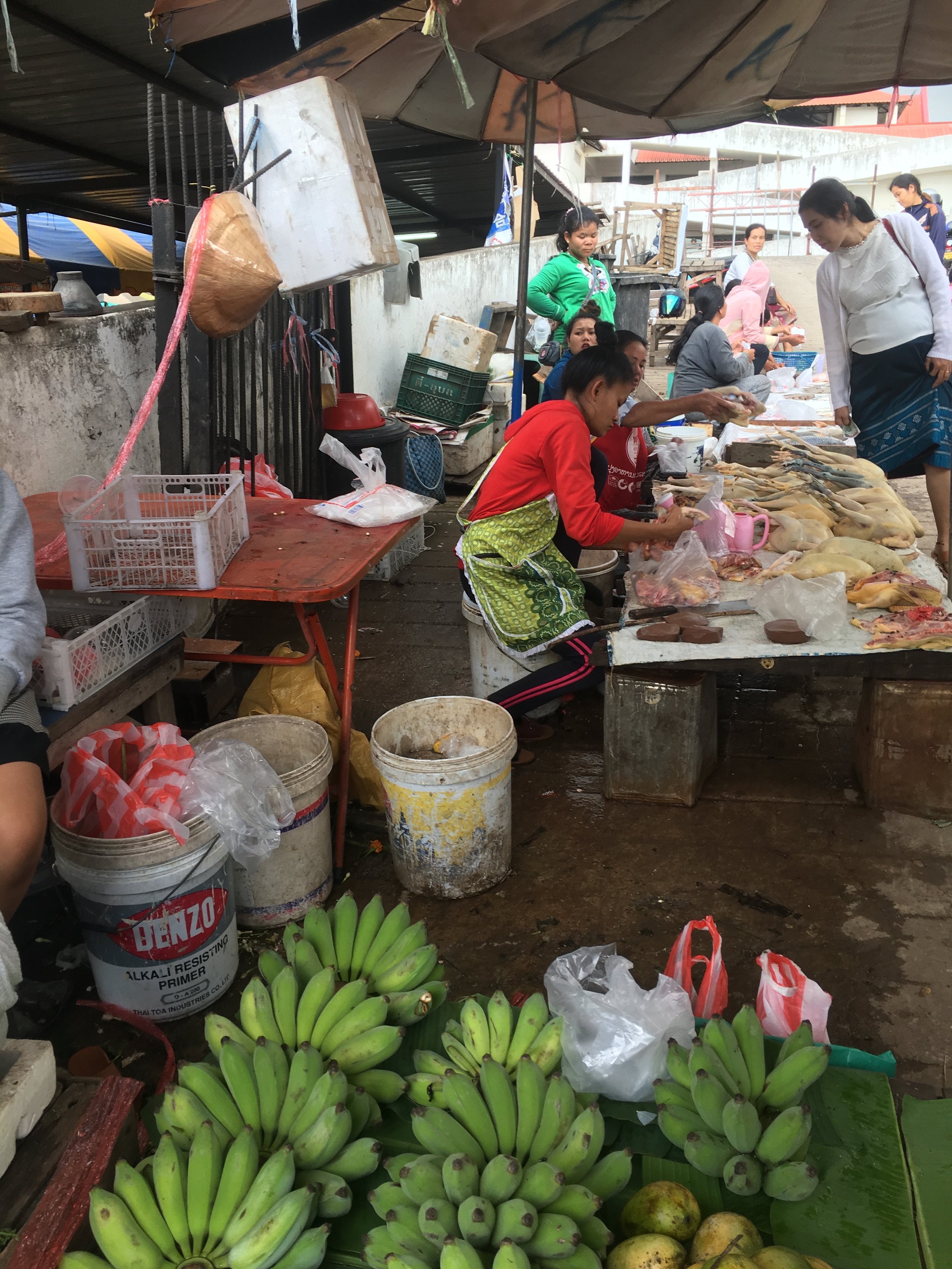
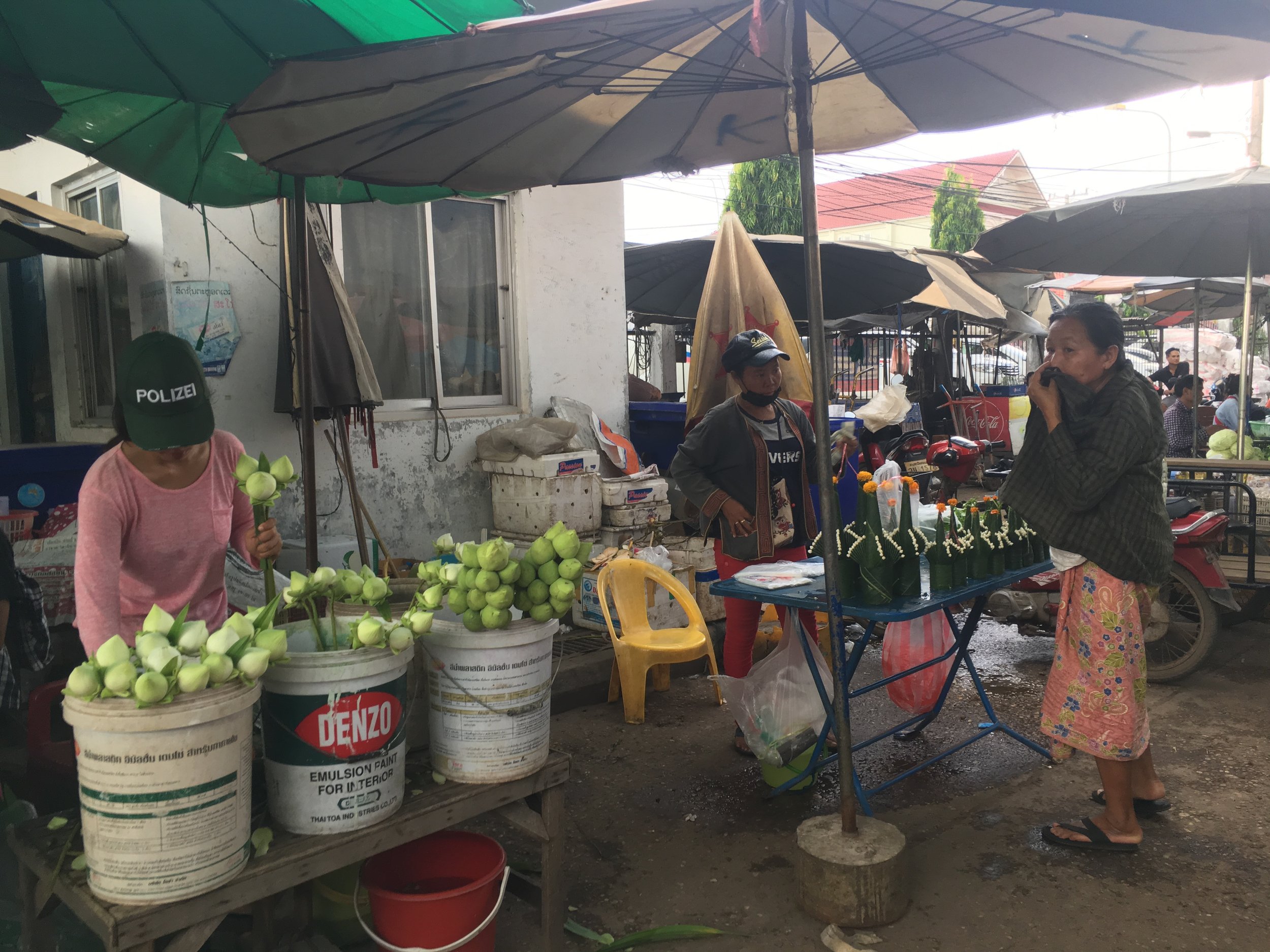

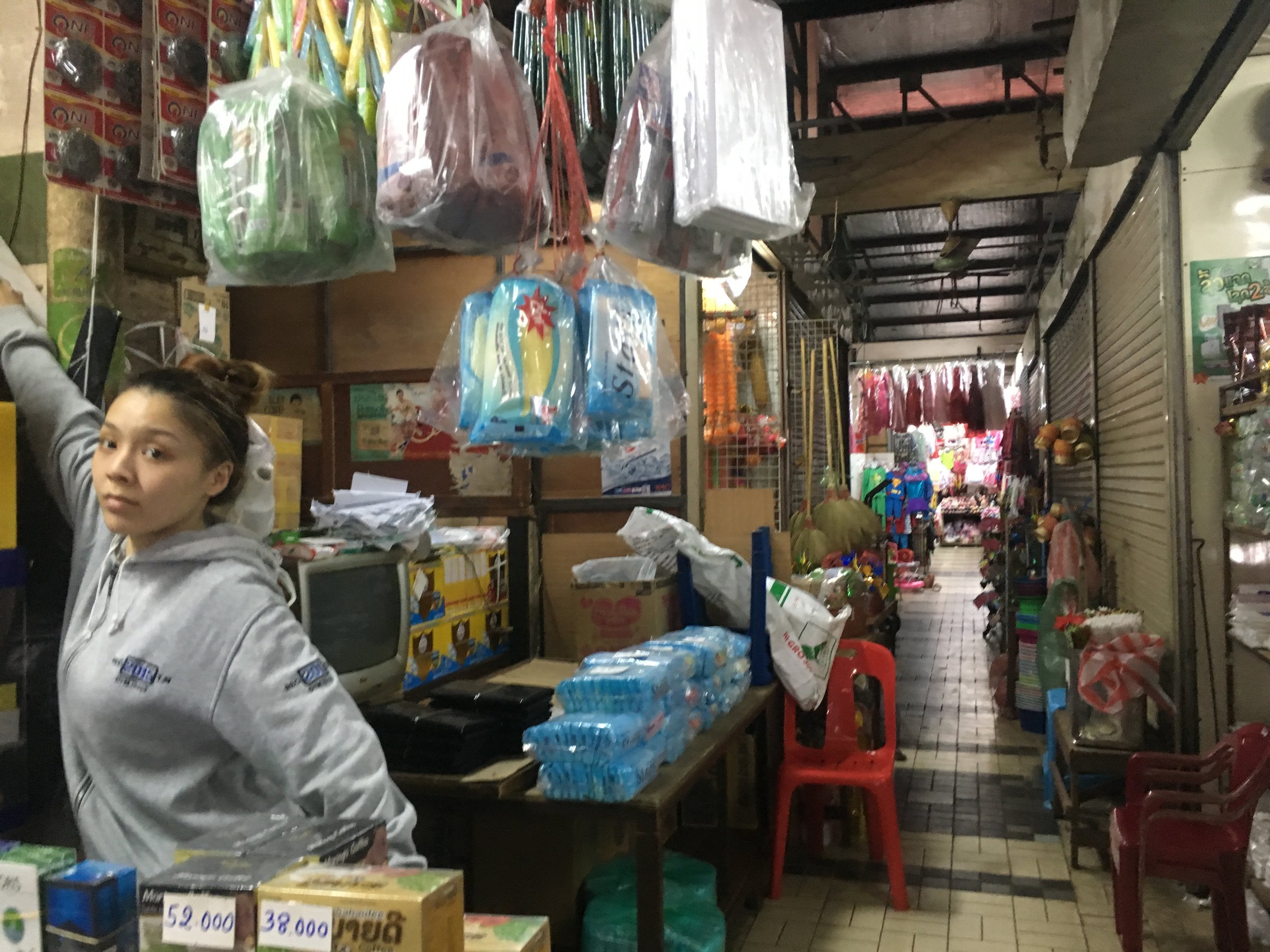
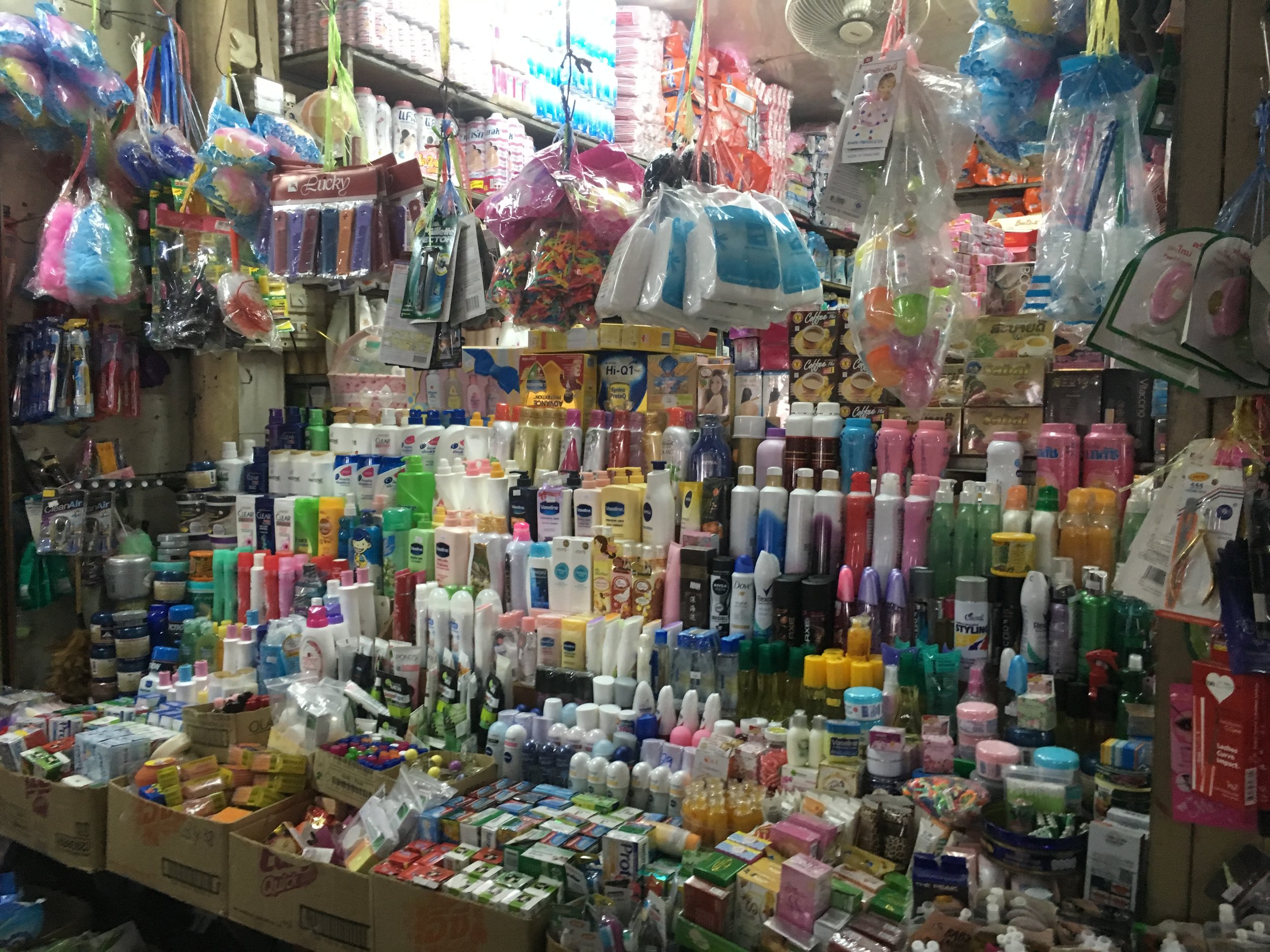
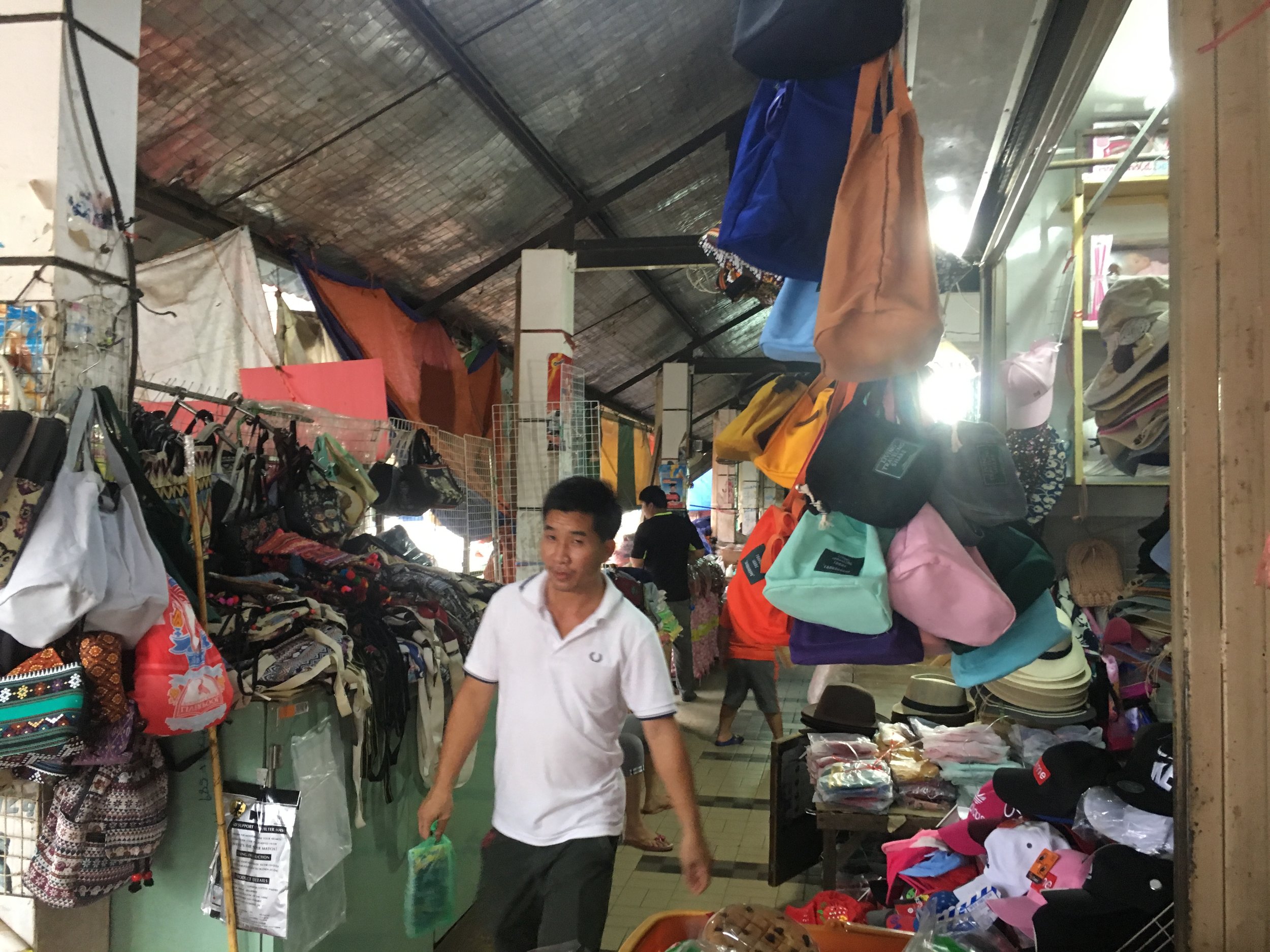
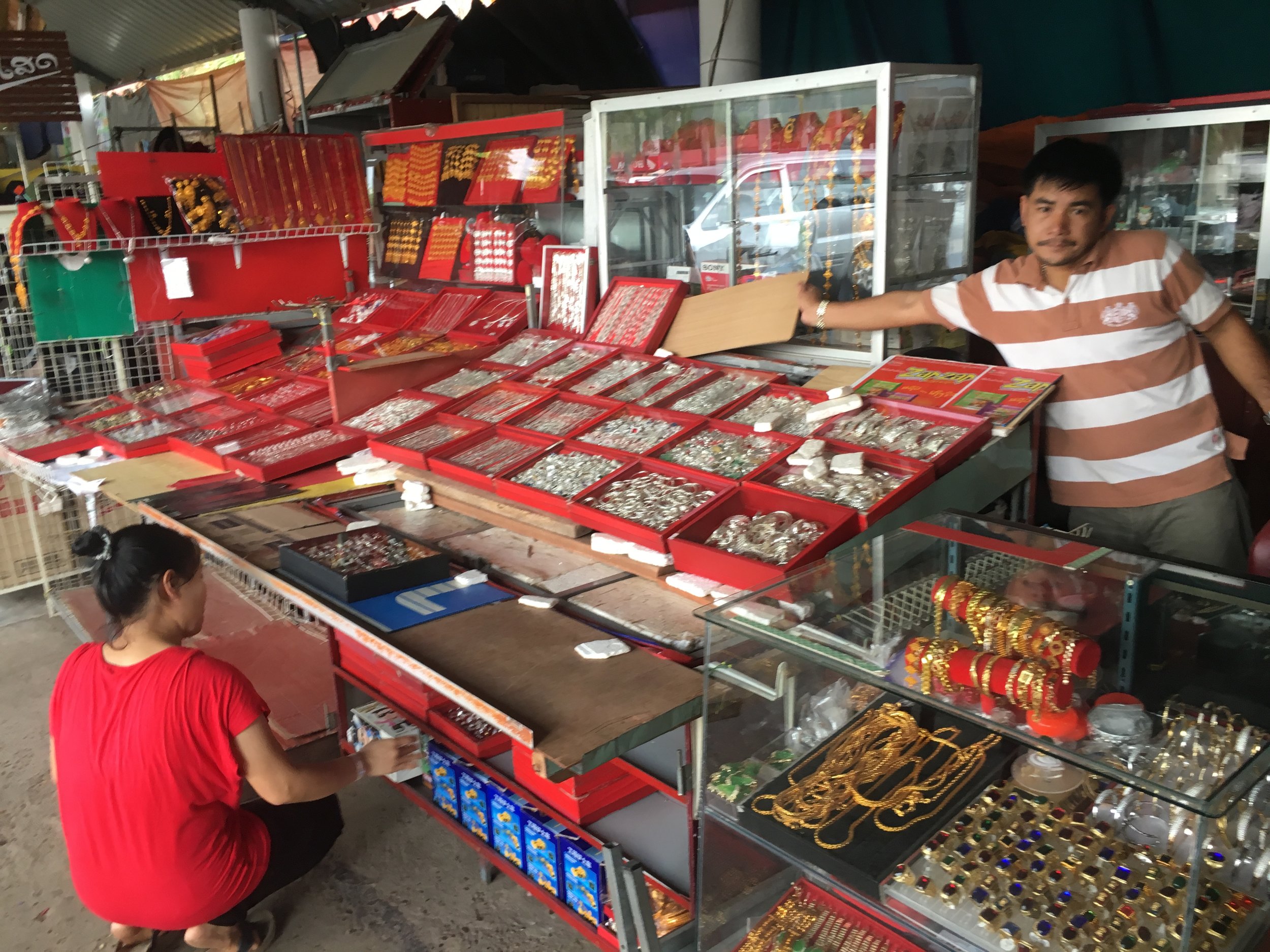
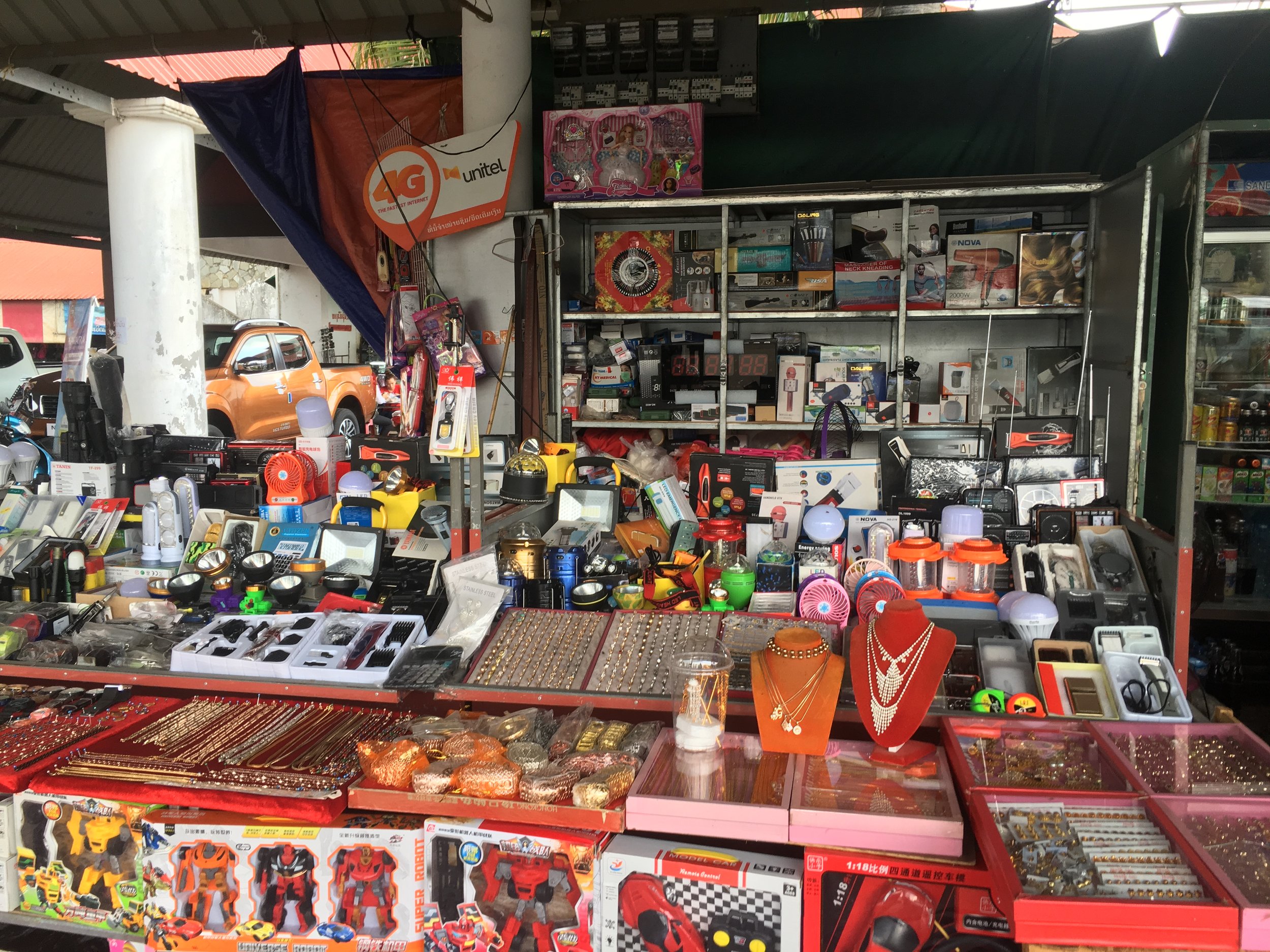
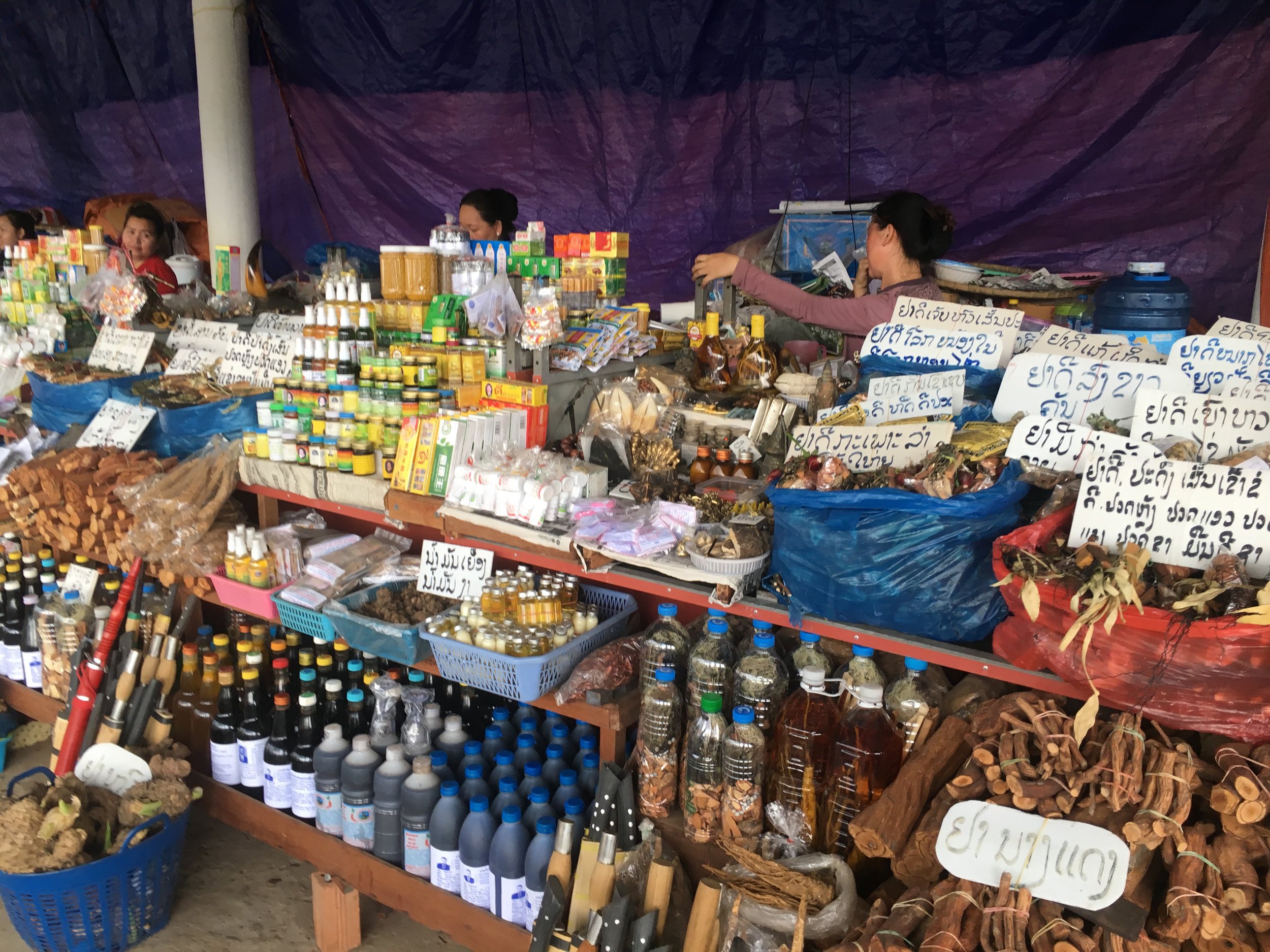
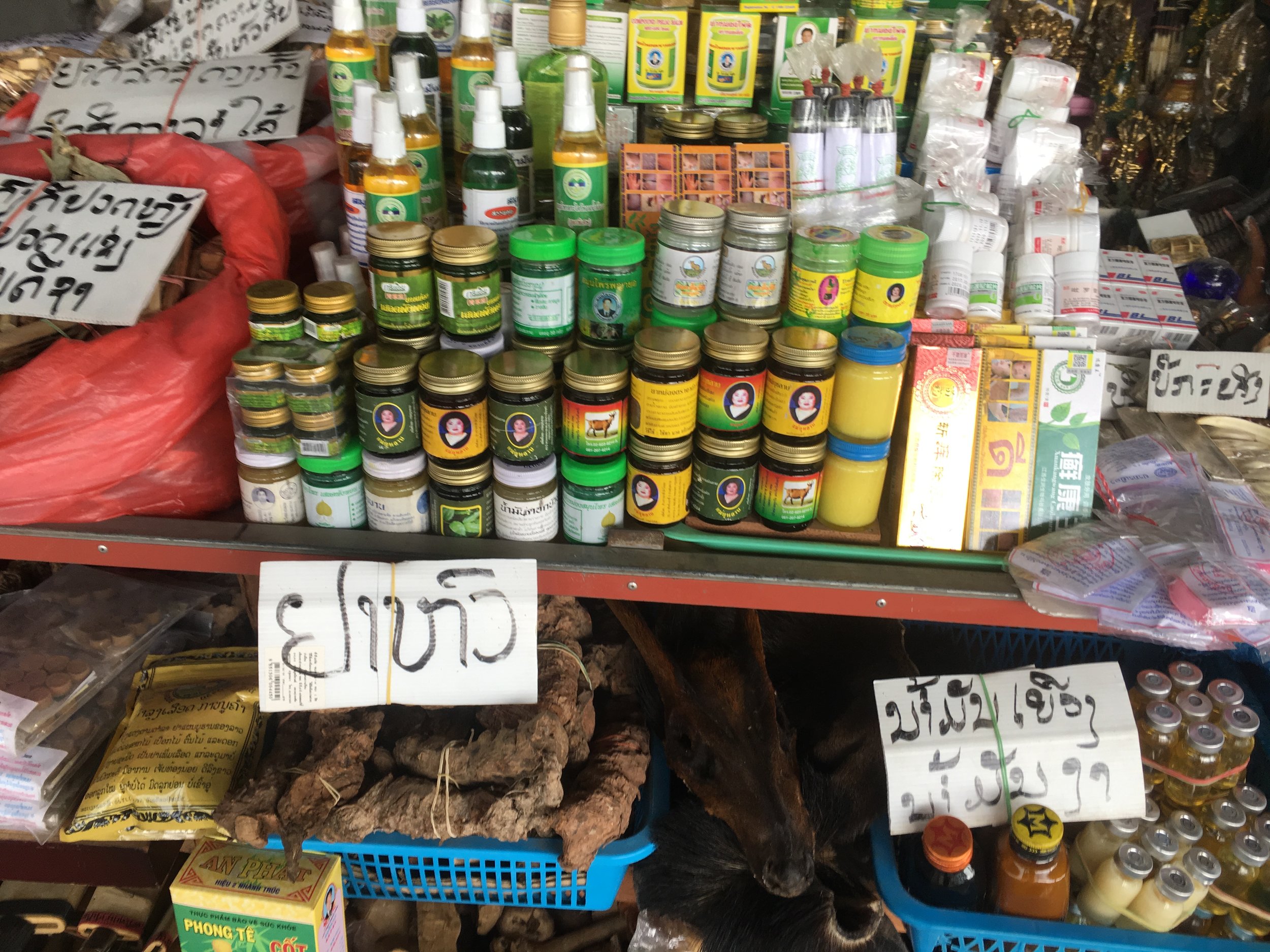
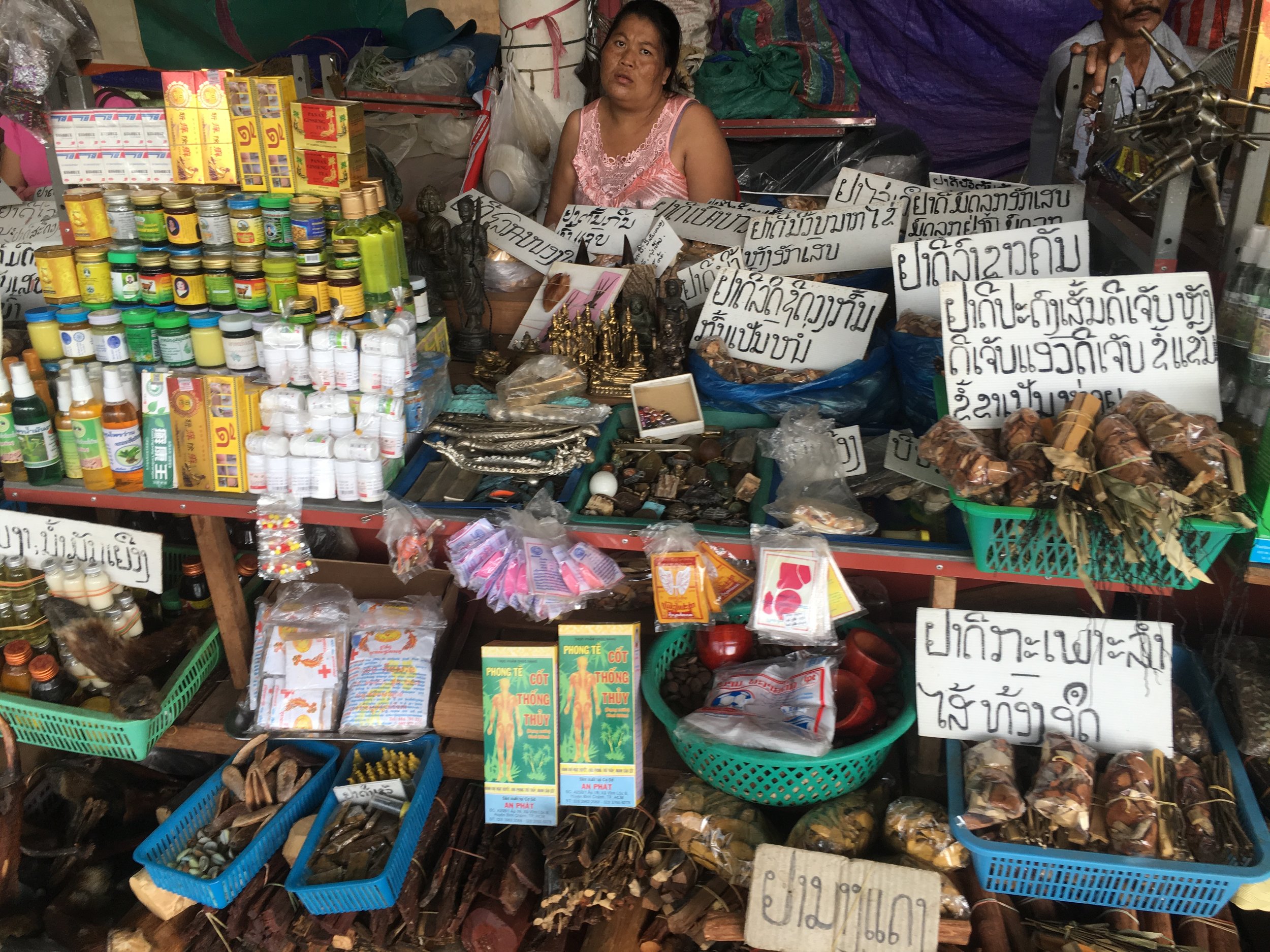
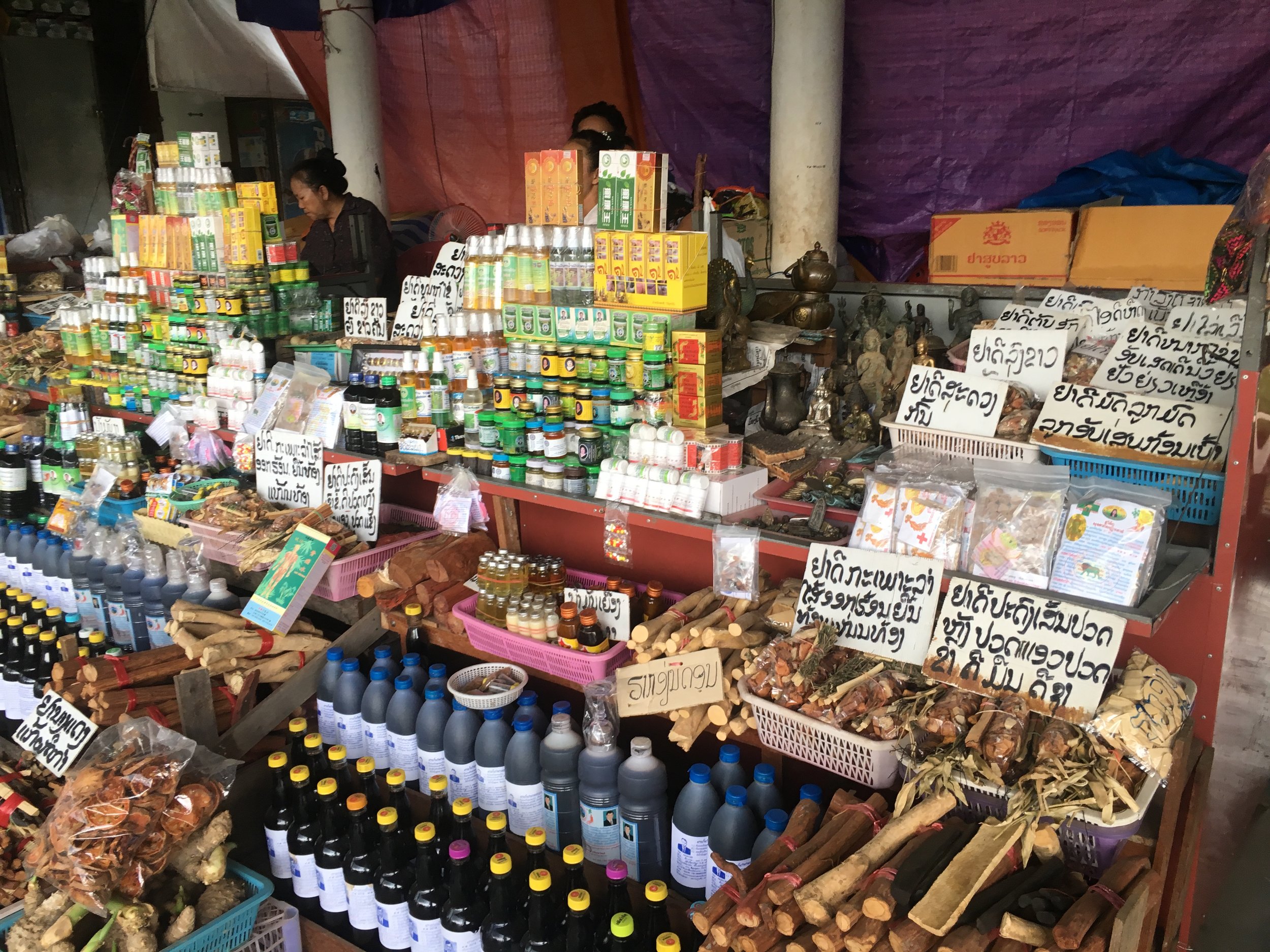
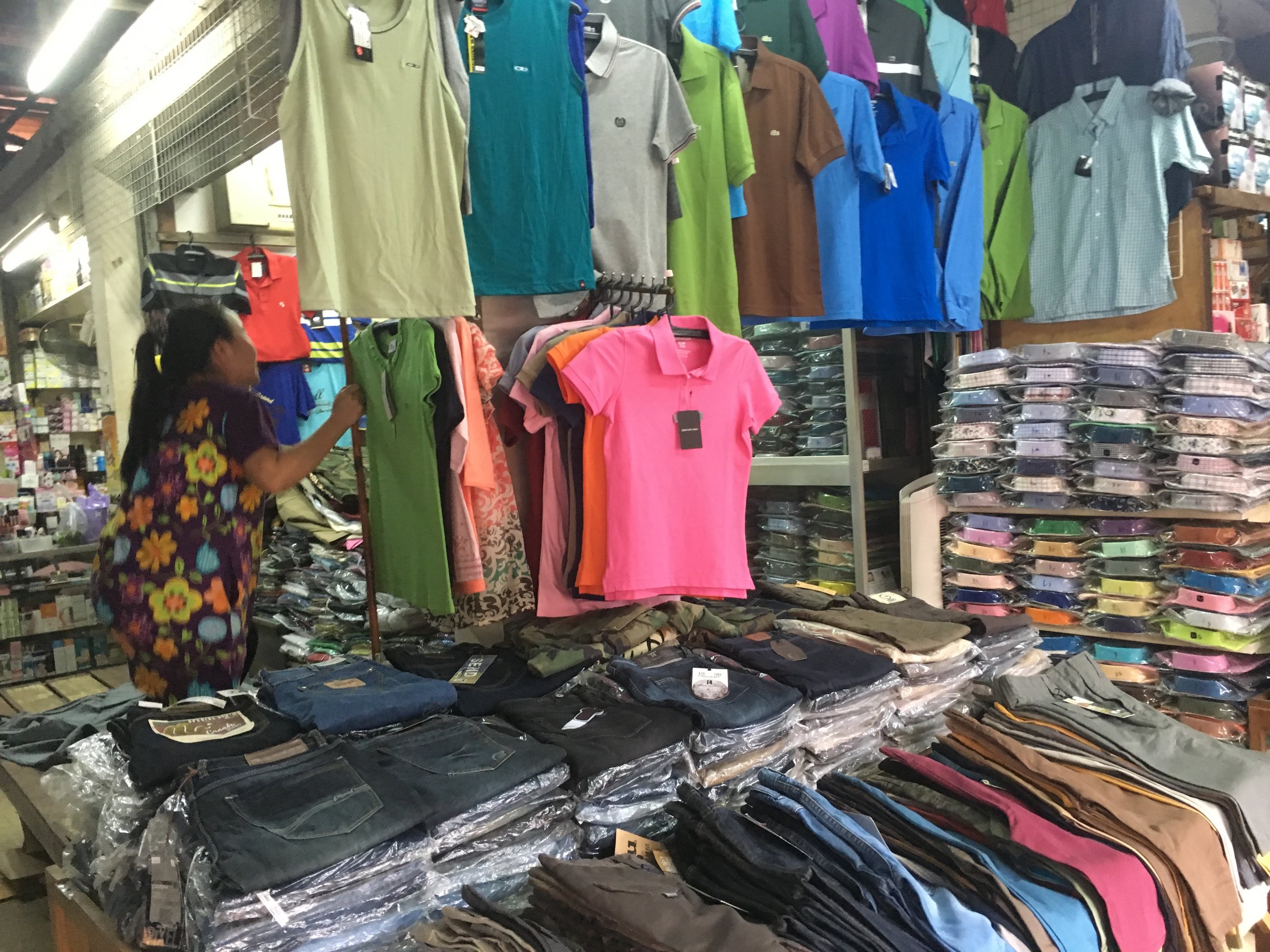
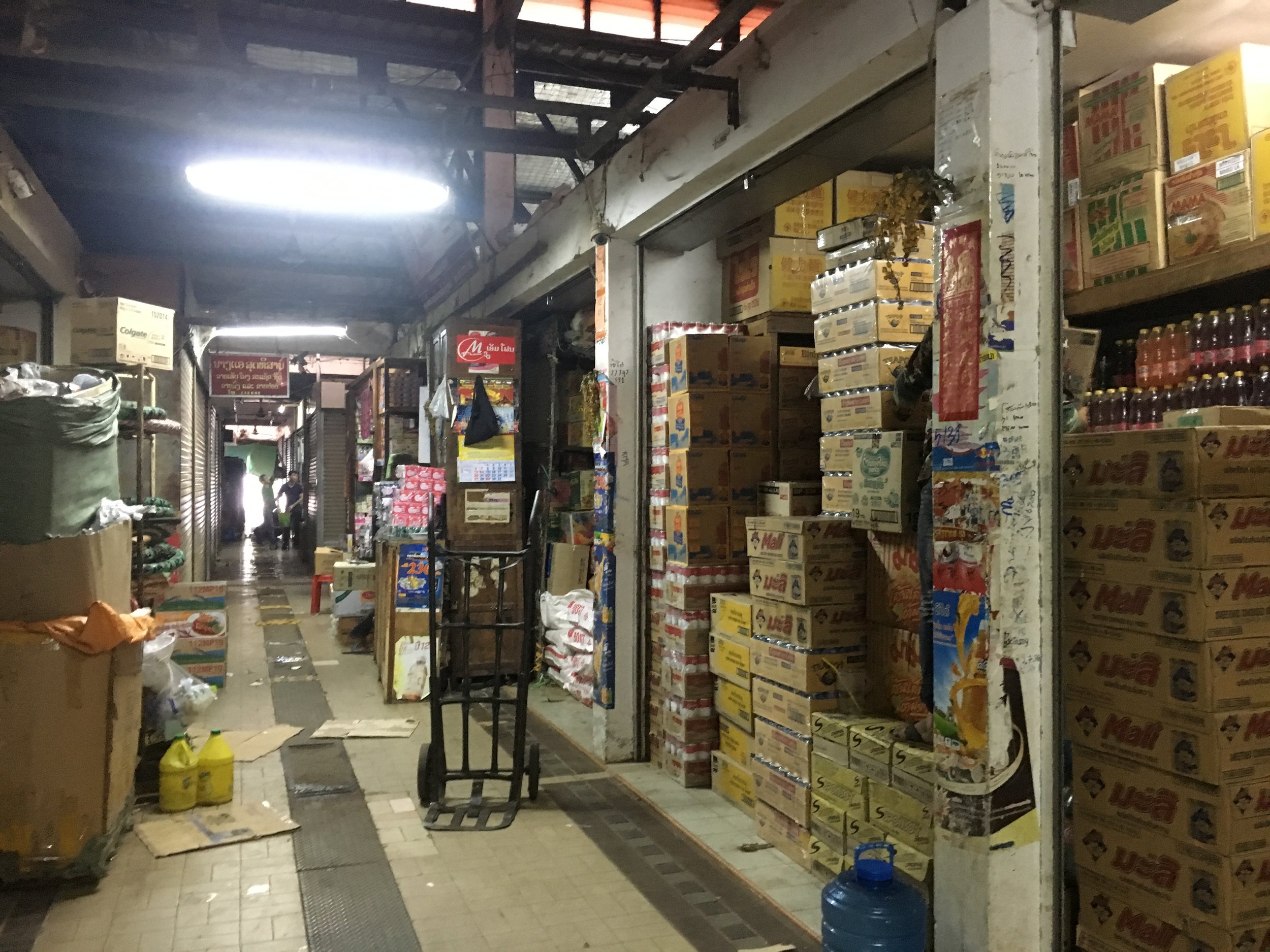

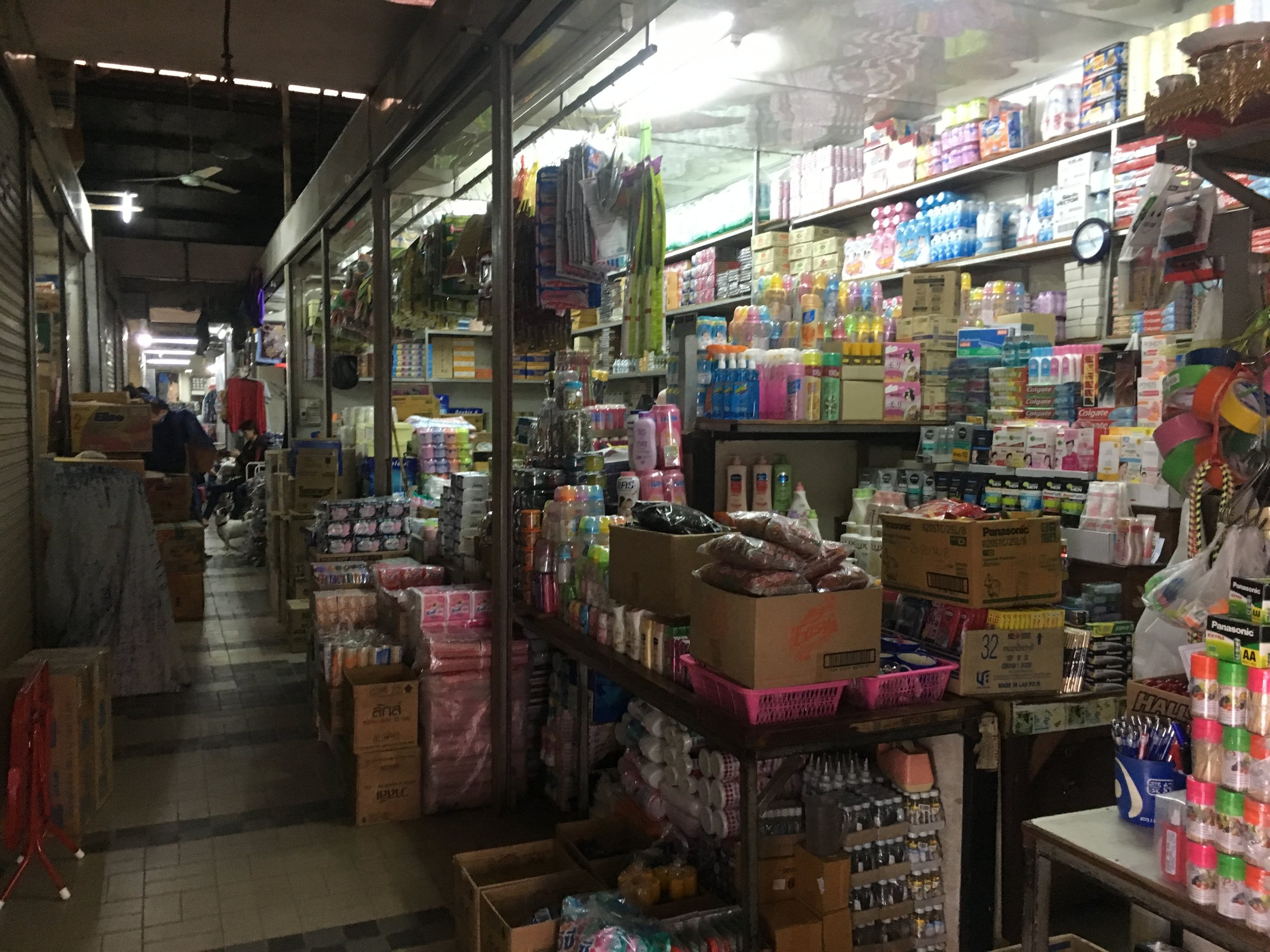
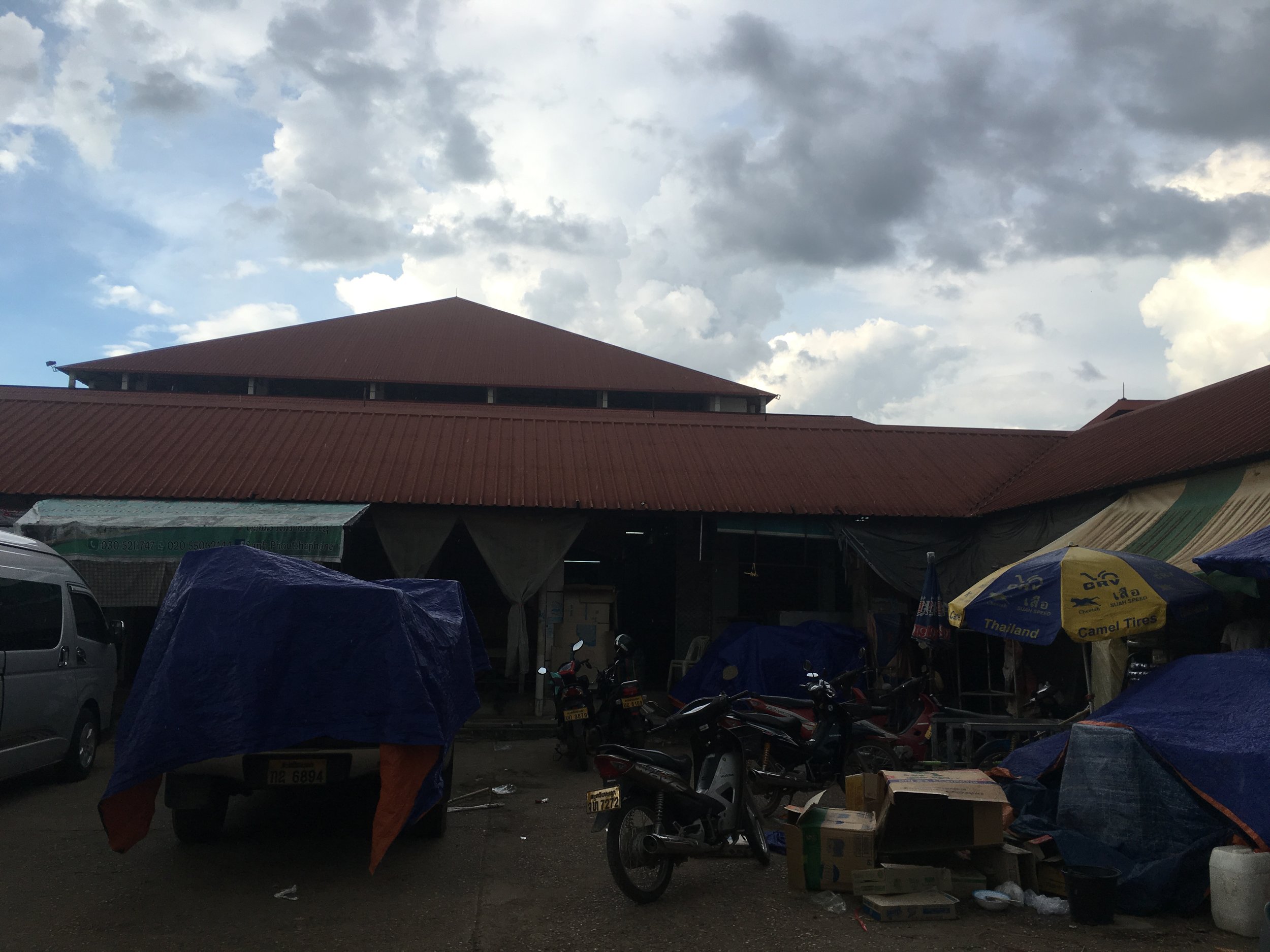
One of my most frequent purchases are 5000 kip pre-diced raw veggie trays wrapped in cellophane. They keep in the freezer and can be fried up in minutes for an easy dinner of beans, peppers, cabbage, carrots, tomato, baby corn, cauliflower and whatever other novelty greens were thrown in that week. They cost less than a dollar and 4 fit comfortably in my bike bags without being squished. However, trying to pay with a crispy 100,000 kip bill from the ATM can cause a major delay.
No one ever has change. They take my money and put up a finger to indicate, “I cannot possibly break this but if I go to enough of my neighbors we will hobble together your change,” and then they run around to various other stalls collecting 20s, 10s and 5s and count out the crumpled notes. I think about how border patrol rejects US dollars with even the slightest tear as I stack and smooth out the notes and put them into my wallet. I’ve never seen anyone at the market write any thing down. I don’t know how they keep track of who owes who what. Or maybe the whole market is controlled by one master veggie seller and the individual booths just give the illusion of a free market enterprise.
At the front of the market near the gold sellers and watch repair men is the traditional medicine section. The stalls are set up under the eves of the indoor market. Tables are spread with mysterious herbs, and whiskey with plants, animal parts, and whole snakes inside the yellow or red liquid. Various salves and pills are displayed with pixilated images of the rashes, wounds and ailments they claim to cure. Small talismans, buddha statues and crystals are displayed to ward off mischievous spirits and feed the soul.
The staple food for the body in Laos is rice. Sticky rice in particular, but rice to be sure. I never knew just how many types of white rice existed until I was faced with choosing from an array of seemingly identical 20 kilo bags all open, with the tops rolled down, their contents shimmering like a million tiny pearls. Some are younger (more delicious) or older from last year’s harvest. Some is imported from Thailand, or from Vietnam. I always go for a mid-range rice. Not the 6000 kip cheapest variety but also not the top of the line stuff either. Most people are buying by the kilo as rice is a major staple eaten every day in Lao households. I always have to repeat myself, “Yes, I would like just half a kilo. I have my own bag.”
The same thing happens to me when I buy chilis. They’re sold by the kilo. I have no use for 2.2 pounds of spicy peppers, I just want 2 or 3 individual vegetables. “Ao song AN bo ao song LO.” Two chilis don’t weigh anything. They don’t move the scale. The woman selling vegetables more often than not just throws them in with my onions or garlic or cucumbers and shrugs. Falang are notorious for “not eating spicy.” I pay for my other produce and ask her to put it in a bag I brought. Double and triple bagging is common. If I’m not fast enough, the onions, garlic and cucumber each get their own bag and those three bags are put into a fourth and I wish I had the words to explain the floating plastic heap in the middle of the Pacific but all I can do is say, “Bo sai tong, khoy mee tong khoy.” Don’t put it in a bag, I have my own.
After Colleen and I let our Mae Ban go and started cleaning our own house we went to the market in search of a mop. I thought we might find one near other items made of string and rope. I had bought a netted hammock for $4 and rope to tie it up for $1 so we started there. Someone pointed us farther into the market and we found a deluxe mopping kit with a janitor-style wringing bucket, extendable mop handle and soap tray for $15. This seemed exorbitant in the land of $4 hammocks. We kept looking and found a pink handled $2 mop near the charcoal grills and fishing line area. Colleen biked home with it under her arm.
Another time we were in search of baking supplies. Good breads and cakes are few and far between and having one of the only full sized ovens in Savannakhet, we figured we should start baking. Colleen bought a cookie sheet in Thailand and I remembered a stall near the butcher section that sold peanut butter and jelly (decidedly foreigner products) and suggested we check it out. Careful not to step in the puddles of blood pooling around the butchers’ tables and breathing through my mouth to minimize inhaling the smell of death, we walk to the potential baking supply stall. A man in his 20s greeted us in perfect English and told us, yes, he does have vanilla and baking powder. He rummaged past the pasta and packaged cookies and came up with two small unmarked bags of white powder. They looked like drugs. We bought them anyway and made cookies, which were very good.

